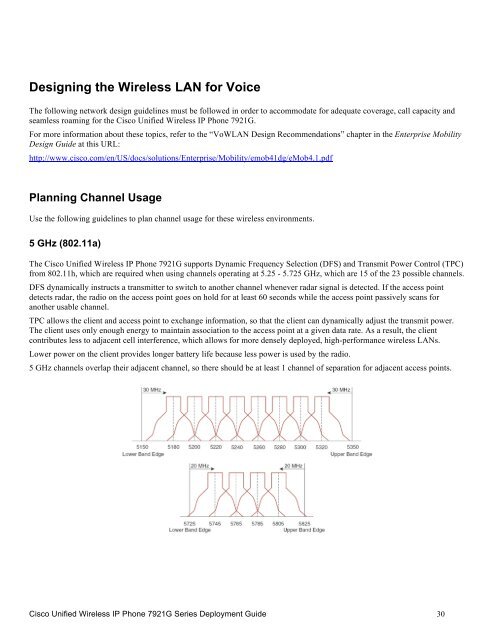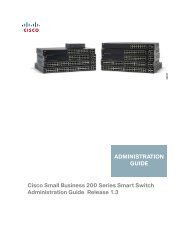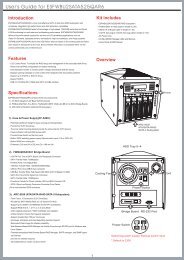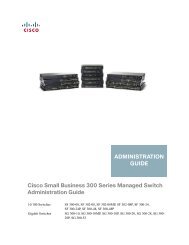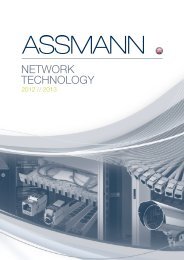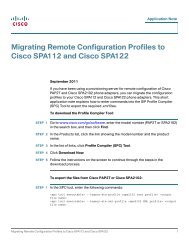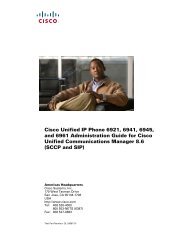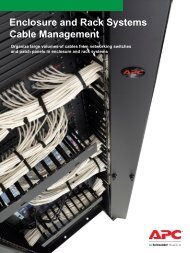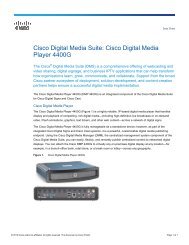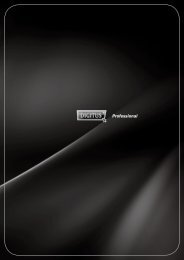Cisco Unified Wireless IP Phone 7921G Deployment Guide - SWS a.s.
Cisco Unified Wireless IP Phone 7921G Deployment Guide - SWS a.s.
Cisco Unified Wireless IP Phone 7921G Deployment Guide - SWS a.s.
You also want an ePaper? Increase the reach of your titles
YUMPU automatically turns print PDFs into web optimized ePapers that Google loves.
Designing the <strong>Wireless</strong> LAN for Voice<br />
The following network design guidelines must be followed in order to accommodate for adequate coverage, call capacity and<br />
seamless roaming for the <strong>Cisco</strong> <strong>Unified</strong> <strong>Wireless</strong> <strong>IP</strong> <strong>Phone</strong> <strong>7921G</strong>.<br />
For more information about these topics, refer to the “VoWLAN Design Recommendations” chapter in the Enterprise Mobility<br />
Design <strong>Guide</strong> at this URL:<br />
http://www.cisco.com/en/US/docs/solutions/Enterprise/Mobility/emob41dg/eMob4.1.pdf<br />
Planning Channel Usage<br />
Use the following guidelines to plan channel usage for these wireless environments.<br />
5 GHz (802.11a)<br />
The <strong>Cisco</strong> <strong>Unified</strong> <strong>Wireless</strong> <strong>IP</strong> <strong>Phone</strong> <strong>7921G</strong> supports Dynamic Frequency Selection (DFS) and Transmit Power Control (TPC)<br />
from 802.11h, which are required when using channels operating at 5.25 - 5.725 GHz, which are 15 of the 23 possible channels.<br />
DFS dynamically instructs a transmitter to switch to another channel whenever radar signal is detected. If the access point<br />
detects radar, the radio on the access point goes on hold for at least 60 seconds while the access point passively scans for<br />
another usable channel.<br />
TPC allows the client and access point to exchange information, so that the client can dynamically adjust the transmit power.<br />
The client uses only enough energy to maintain association to the access point at a given data rate. As a result, the client<br />
contributes less to adjacent cell interference, which allows for more densely deployed, high-performance wireless LANs.<br />
Lower power on the client provides longer battery life because less power is used by the radio.<br />
5 GHz channels overlap their adjacent channel, so there should be at least 1 channel of separation for adjacent access points.<br />
<strong>Cisco</strong> <strong>Unified</strong> <strong>Wireless</strong> <strong>IP</strong> <strong>Phone</strong> <strong>7921G</strong> Series <strong>Deployment</strong> <strong>Guide</strong> 30


